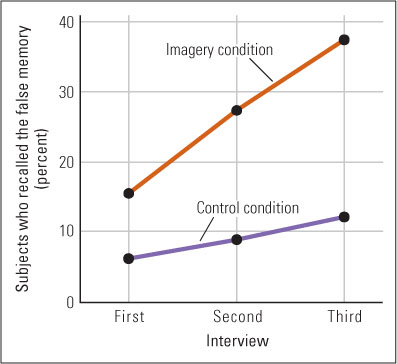
Figure 9.20 Effect of imagery on development of a false memory Adult subjects were told (falsely) about an Incident that happened In their childhood. They were asked to try to remember It either by thinking about It (control condition) or by vividly imagining what might have happened (imagery condition). This procedure was repeated the next day, and the subjects’ memories were again assessed in a third session, 2 days after the first. The graph shows the percentage of subjects in each condition, at each interview, who claimed to remember the incident.
(Based on data from Hyman & Pentland, 1996.)